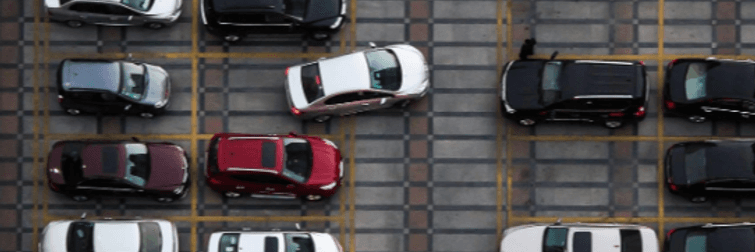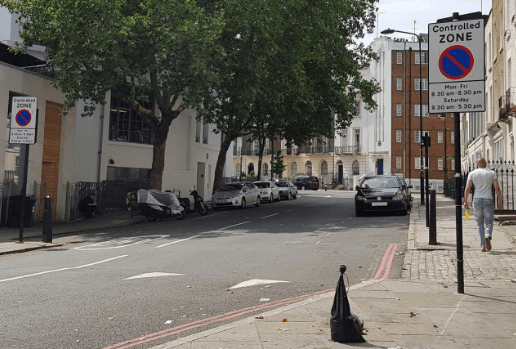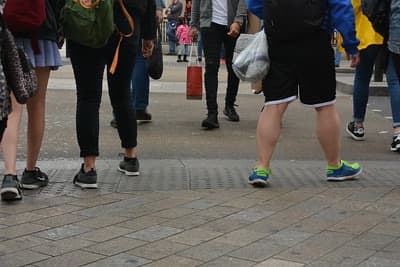
blog: All revved up with no place to go
Wednesday 6th May 2020
The COVID-19 pandemic has deeply affected everyday life as we know it in the UK, with the majority of people isolating themselves for much of the last six weeks to limit their risk of infection and the burden on public services - especially the NHS. While it is far too early to total the financial cost of a public health crisis that continues to claim hundreds of lives each day across the UK alone, there is growing media discussion over how soon (and how progressively) current movement restrictions can be relaxed.
Where's everybody gone?
Inevitably, the impact on the amount of journeys we make has been profound. In early April the Transport Select Committee reported that, when compared with the first week of February:
- The number of domestic rail journeys has dropped by 95%.
- Bus and coach journeys outside London reduced by 88%.
- Traffic volumes fell 71% on the roads.
While most people are staying at home, key workers responsible for delivering public services and satisfying the population's basic human needs have become increasingly reliant on walking and cycling as practical ways of getting around major cities. Elsewhere, empty roads mean drivers are currently experiencing delay-free journeys at times of day when such a thing would have been unimaginable just eight weeks ago.
The 'Cost of Corona'...
For many the economic cost of a 'force majeure' event such as a global pandemic will pale into insignificance next to the loss of human life being grimly reported on a daily basis. Yet the near-term prospects for a rapid return to 'business as usual' activities are uncertain at best. They are exacerbated by the very real possibility of structural changes to the global economy - including the accelerated decline of high-street retail and obsolescence of lower-skilled labour-intensive jobs - being hastened by any lingering recession.
While the Government has quickly established 'fighting funds' to assist individuals and business owners, as well as bus and rail operators that otherwise risk succumbing to relatively fixed operating costs and fractional revenues, it appears to have so far largely overlooked local Government. From a transport perspective, one of the key sources of revenue that is being hard-hit derives from car parking in our towns and cities and at municipally-owned visitor attractions.
... also includes parking revenues
Each year the RAC Foundation reports on the total value of parking revenues and surpluses generated by the 353 local authorities in England. Its latest report suggests parking activities - comprising day-to-day operation of on- and off-street parking spaces, and associated enforcement activities - generated a total surplus of £930m on a turnover of £1.75bn in the 2018/19 financial year.
While this analysis is unlikely to include the long-term costs of maintaining parking assets, and programmed investments in them, it gives an indication of the scale of revenues being lost from the public purse as a result of the COVID-19 pandemic.
Based on the six weeks of lock-down to date, and assuming a conservative 'straight-line' reduction in parking demand of 66% (informed by on-street parking data ITP has seen from UK cities we work in), a rough estimate is that local authorities in England have so far taken a ~£70m hit on their combined parking surpluses.

This doesn't consider the impact on private sector parking providers, whose revenues are also likely to be adversely affected. This may yet present something of a 'double whammy' for landowners of ailing town and city centre retail sites, bringing wider implications to the economic contribution such places make to local government coffers.
Financial realities...
The law on parking charges levied by local authorities restricts the use of any surplus to:
- Providing and maintaining on- and off-street parking facilities.
- Providing or operating public passenger transport services.
- Funding highway or road improvement projects within the local area.
- In London, anything that facilitates the Capital's transport strategy and its specific aims.
In practice, this legislation and rising parking charges (with inflation and demand over time), have effectively rendered local government increasingly dependent upon parking revenues. This has perpetuated a need for driving into town and city centres remaining a key component of the formula that generates revenue funding for local transport facilities and services. Never has this been more important than now, as central Government has prioritised capital investment in transport networks in the years since the global financial crash and subsequent recession.
... and opportunities for change?
It is not uncommon to encounter this first-hand when urging Councils to consider alternative uses for parking sites in town and city centres. Everyone agrees wholeheartedly on the strategic priorities, and environmental and public health gains, of limiting car-based access into urban centres.
However, the financial realities of removing municipally-owned car parking capacity are often too grim to bear for Finance Officers charged with balancing the books and keeping the traffic lights on.
Transport strategy teams also fear a loss of control over urban parking supply to private sector operators, who may not operate city centre car parks with the same holistic principles as a benevolent Council. Yet my colleagues at ITP and I routinely question this logic, noting that - rather like nuclear arms - both public and private sector operators holding the 'weapons' (coupled with widespread out-of-town development) appears only to have helped mutually assure the destruction of the centre of our towns and cities over the past 40-50 years.
Hope for the future
With the future of travel demand now more uncertain than ever, and a socially-distanced start to the third decade of the 21st Century feeling like a racing certainty, it is challenging to predict what impact COVID-19 will have on longer-term demand for parking in town and city centres. Mainstream media and industry commentators alike forecast a possible return to car-based mobility across the country, with society growing more concerned about the risk of infection associated with public transport journeys - especially in densely populated metropolitan areas. However, at a certain point in the life-cycle of any piece of transport infrastructure it can begin to feel more like a liability than an asset.
The optimist in me hopes that Councils across the land will observe their vacant town and city centre car parks, bear witness to the large numbers of people out walking and cycling for their daily exercise on quieter urban streets, and ponder whether parking might now be considered a genuine 'meanwhile' use of otherwise highly-prized - and potentially valuable - urban land.

Who knows, perhaps then the NHS will not prove to be the only long-term reputational and financial beneficiary of a grim public health crisis that has the nation in a vice-like grip?
Neil Taylor co-leads ITP's Policy & Strategy sector, and has overseen the development of a number of progressive urban area parking strategies in the UK. Find out more about ITP's parking strategy work and please Get in Touch if you would like to know more.
